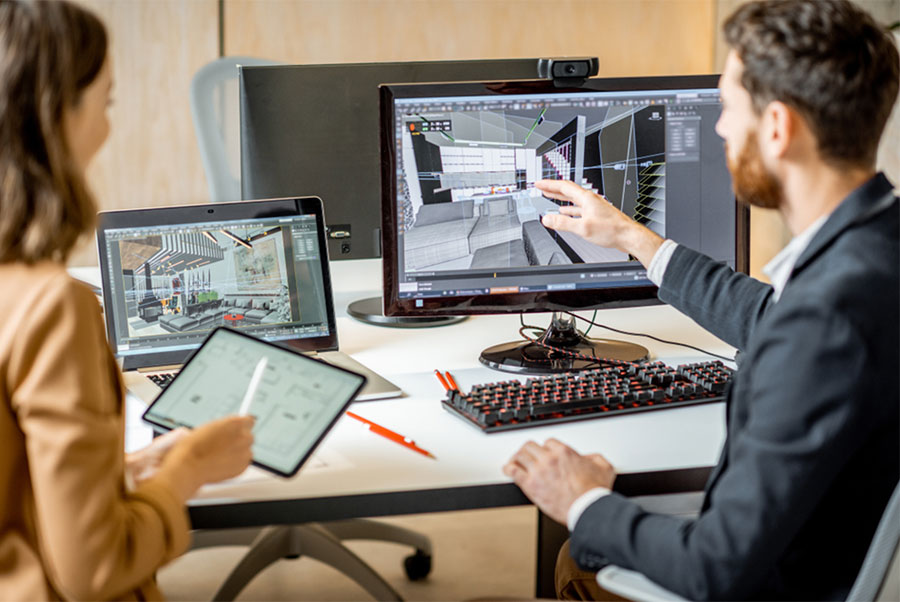Generative design, machine learning and artificial intelligence is beginning to shape the world of architecture as we know it today. When these tools and systems are employed to reimagine the constructed environment, they offer architects a world of opportunities to rework and rethink their traditional workflows. Of course, some designers are worried that these developments could have a negative impact on practice, making architects’ services more limited.
As towns and cities progress and develop, new tools are emerging that change how contractors, consumers and architects alike create and envision the built environment. These days, building codes and data are more accessible than ever before, and now, developers and homeowners are able to input a data set of information to produce a fully optimized design.
A new startup has even offered a service to give consumers the home of their dreams with no need to hire an architect. All of this is worrying news to those in the industry, but is there anything to really worry about?
At the moment, architects are still responsible for defining design parameters and goals. Meanwhile AI algorithms are producing options for consumers to consider. As yet, these options aren’t entirely holistic, but every day, technology takes strides to becoming increasingly so. AI design enhancements are now started to have a profound impact on how the built environment is shaped, so precisely how is AI changing architecture as we know it?
Is Automation Going To Affect Architects?
At the moment, artificial intelligence is mostly associated with the world of gaming. There’s no doubt that AI has moved in leaps and bounds in the gaming industry, now offering players a world of personalized and authentic experiences. One example of AI in practice in the gaming industry is the arrival of live dealer casinos which offer a realistic virtual real money gambling experience for punters in the comfort of their own homes. However, all of this is a world away from architects and their designs.
However, according to experts, almost half of the work currently carried out by humans is likely to be replaced by robots within the next two decades. It has even been estimated that AI, nanotechnology and robotics will already have led to over 7 million jobs being lost worldwide by 2020 since human employees are less necessary to complete tasks. Could this job attrition impact on architects too?
Are Algorithms Going To Be Designing Tomorrow’s Floor Plans?

There is already an algorithm out there known as Finch which can generate a range of spatial configurations to meet predetermined parameters when the space’s total area is adjusted. This works to define zones within a project’s initial stages and these can be refined at a later time according to the assignment’s specific requirements.
Another experimental project called Evolving Floor Plans has been developed which explores optimized and speculative plan layouts by using generative design. Created by Joel Simon, a programmer, this program was designed to approach the design of floor plans solely from an optimization perspective with no regard for constructability or convention, organizing rooms and people flow through genetic algorithms to minimize hallways usage and walking time.
Although this is clearly not fit for use in regular design yet, it’s a move towards using algorithms to develop more complex floor plans in the future.
The Automation Of Home Design
Higharc is a startup which has started to rethink the ways in which new homes are built and designed with no need to hire an architect. Established to reinvent the design of new properties to suit today’s digital age, this organization aims to supply customized homes which anyone can access through online automated home customization and design.
By taking on pre-made plans, Higharc is keen to return design to housing options so customization becomes accessible to the public. The company’s tagline is that it can give consumers the home they design with no need for an architect and its web-based design app allows homebuyers and everyday users to get hands-on with their own property creation. Should this idea take off in a big way, it could pose as a potential threat to the industry..
Should Architects Be Worried About Their Jobs?
Although the advent of AI raises some issues for architects, the reality is almost certainly that there’s nothing to worry about just yet. Artificial intelligence algorithms are advancing all the time, but it’s unlikely that computer learning will take over from human design services any time soon. However, AI does offer exciting new possibilities for architects to make their job easier and to simplify some of the more complex elements of their work. If the industry harnesses the potential of artificial intelligence-enhanced design, it could lead to a much brighter and easier future for the industry as a whole.




